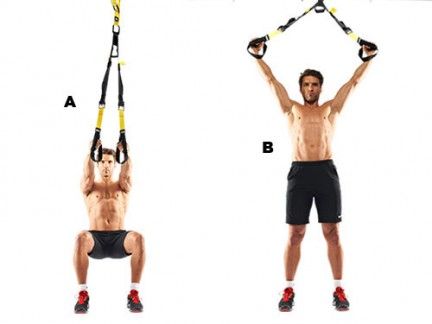With March Madness taking center stage in the sports world, we asked the head strength coach for Men’s Basketball at Washington State University, Scott Thom, to explain the importance of preventing injury when the season is on the line. To counter muscular imbalances from the rigors of playing, training and everyday life, Scott uses TRX in his weight room to activate and strengthen muscles often neglected. With stronger muscles, his players are able to correct imbalances, improve their movement patterns, stay injury free and ultimately perform better on the court when it matters most.
My athlete’s world is often dominated by work done in the frontal plane, from playing basketball, to homework on the computer, to a plethora of cell phone texts and social media posts. On a side note, I’ve never seen a selfie taken in the dorsal plane. All joking aside, this can lead to an imbalance in muscular development. It’s not uncommon for my players to show signs of upper cross syndrome, internally rotated shoulders. This muscular imbalance will affect their ability to perform certain exercises and can lead to poor movement patterns and injuries.
The Exercises
1. Press-Ups x10 (TRX Wall Slides)
*Athlete is in an upright position, slightly leaning back to create tension on the TRX, legs are straight, toes point to their nose, athlete presses upward in a military press style.
2. Scapular Rows x10 (TRX Scapular “Js”)
*Athlete positions in an inverted row, arms are straight, scaps protract and retract.
3. Alligators x10 (TRX Split Flys)
*Athlete slightly leans back, arms are straight, using their upper back and rear deltoids they pull the TRX apart by the handles, which moves their body forward, concentric and eccentric portion of the exercise is done at the same tempo.
4. Inverted Row x10 (TRX Low Row)
*Athlete leans back, body stays straight and strong, heels in the ground, toes up, hips and shoulders are in alignment, athlete pulls handles to their sides, while keeping shoulder back.
We will go through this circuit one time before every upper body lift. So, whether you’re a D1 athlete or a weekend warrior, this TRX shoulder prehab routine when done consistently will help strengthen muscular imbalances in your body and prevent injury.
Coach Thom- Create a great day!
Bio:
Scott Thom is wrapping up his second season with the Washington State University men’s basketball program as the team’s strength and conditioning coach/player development, after serving in the same capacity at California the previous four years. Prior to joining the staff at California, Scott coached basketball and taught physical education for seven years at Vintage High School in Napa, Calif. Scott received his bachelor’s degree in physical education from Chico State in 2002, a teaching credential in physical education from Sonoma State, and a masters in Coaching and Athletic Administration from Concordia University. He is certified though both CSCS and USAW. Scott writes articles for STACK and HarbingerFitness.


